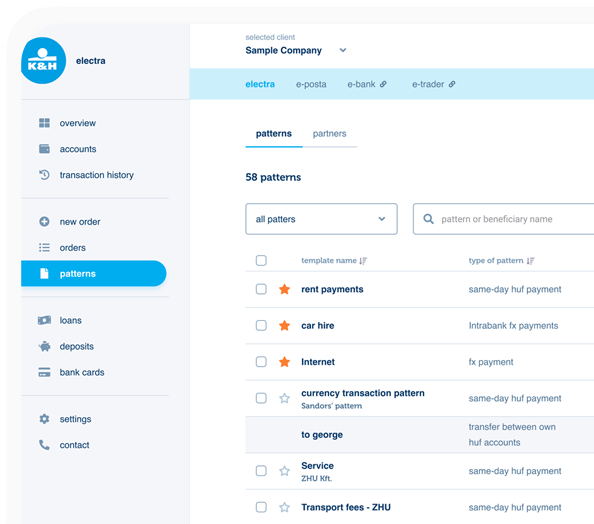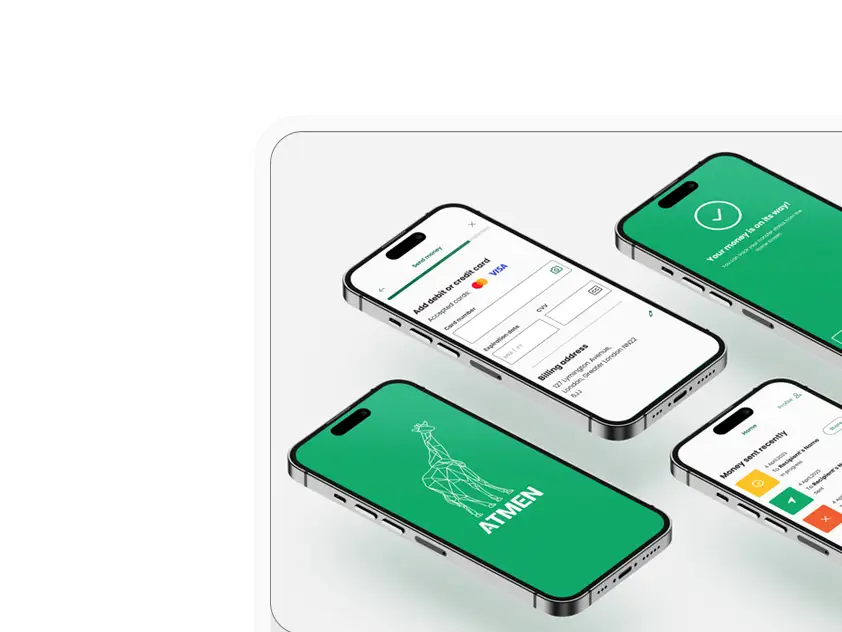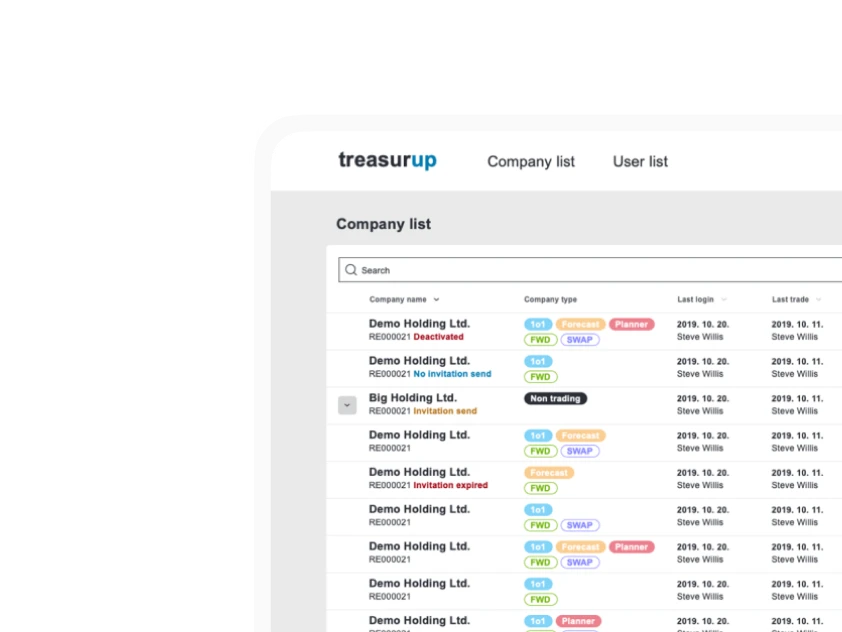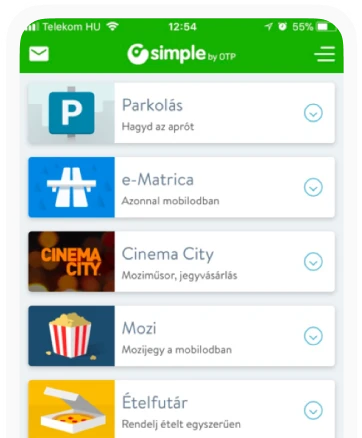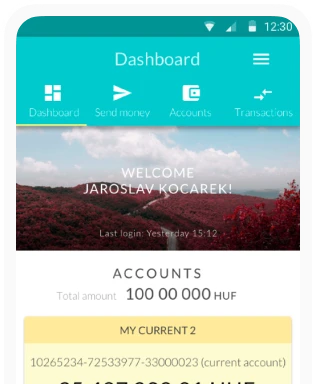Aron Bijl - Ergomania Senior UX Designer
If you get into conversation with Aron Bijl, be prepared to cover a lot of ground. When we speak he’s in a family home outside of Budapest, and we’re quickly ranging over subjects as varied as why it’s good to graze cows on stony ground, and how injection molding is being replaced by 3D printing. The house outside Budapest is a clue to Aron’s dual-national identity, a well-loved place to visit during Hungarian summers. He was raised in the Netherlands and gained his first degree at InHolland University, where he studied Electrical Engineering and Electronics. The educational choice was influenced by Aron’s parents, who suggested his creative leanings weren’t going to provide a steady living. He had started out as a photographer, and then clients began to ask if he could come up with logo designs. Well, why not? So next he was a graphic designer too, then the inevitable enquiries began as to whether he could also design web pages. To probably no-one’s surprise, it turned out that Aron was also soon a web designer, and doing OK.
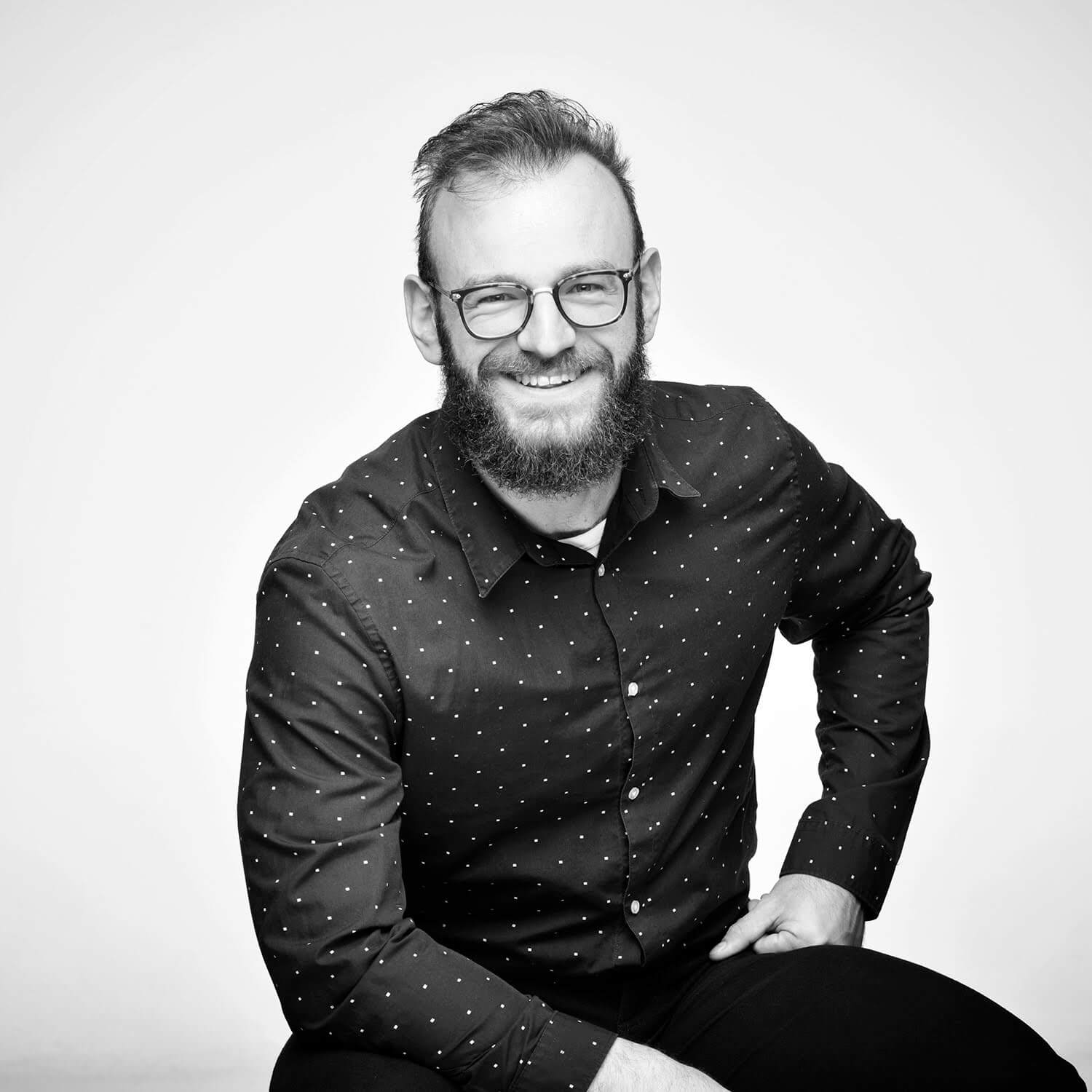 Aron Bijl
Aron Bijl Jumping on the springboard
Then came one of those lightbulb moments, as Aron read about User Experience design (he says, ‘Probably on Medium’). He’d already used up his allotted education credits in the Netherlands, but being also a Hungarian citizen, could start all over again at Saint István University in Gödöllő. So in 2013 he did, studying Mechanical Engineering, and joining the Springboard mentor-led course. Here he started to get grounded in UX-UI, especially as he had a very encouraging and inspirational tutor. In fact even after Aron decided to move on before finishing the course, the mentoring continued as he began to pick up projects for user experience design.I ask if this means physical design, as in ‘stuff you can hold in your hand’, but no, from the start most of the work was screen-based. However Aron is very engaged by industrial design and mass production methods. He’s enthusiastic about materials and their properties, and how design has to be true to this. Will a design choose wood, or metal, or plastic, and can it be injected into a mould? Does it take a lot of energy to heat and then cool the shaping process?
Digitalizing manufacturing
Later in our conversation we return to Aron’s interest in manufactured products, and how much of it is now so old-tech. Automotive and aeronautic parts are often formed by molding or high pressure stamping. Having created those parts, they then have to be stored, to be distributed around the world. There are huge costs at every stage and it doesn't have to be that way. Aron cites aircraft-makers Boeing as now starting to transform their production line into a digital one - a very ‘traditional’ company embracing new tech - as well as very new offerings such as Tulip. “With digitalization,” he says enthusiastically, “Production lines become more efficient. For example in the auto industry they previously did less design and more testing. Now it’s possible to do more design without actually building prototypes. You can test many things in computer simulations before committing to building a product. So the design may be more costly, but the overall process is less expensive.” OK, check that.He is also excited by the possibilities that digitalization brings to Distributed Design. “We have the internet where we share knowledge, but sharing materials is harder. What if you can share designs using digital technologies and then 3D-print on demand anywhere in the world?” So then a company such as Boeing wouldn’t have to ship parts to depots across the world, they’d just call off a design and print whatever was needed locally. It’s also easy to ‘customize stuff’ with 3D-printing, Aron says. That’s something which is very hard and expensive to do with existing production lines, and he’s also keen to spread the word about services such as Open Desk, which uses digital technology to produce furniture - anywhere in the world.
Joining up all the dots
But let’s take several steps back to the newly trained Aron Bijl, User Experience designer, resident in Budapest and picking up work. So it was all screen based from the word ‘Go’? Well actually, Aron’s first commission was a service, with a physical product. He was vegan at the time, and was asked by a startup offering a box service for vegan food and products to come up with designs for the box and the process. With his partner András Révész looking after the marketing and income side, Aron got stuck into logo and box design, and the webpage. Vegan Box was successful, but at a high price point in a small market of around 20,000 interested customers across Hungary. “It was good for the seller, good for the customers, but not good for us.” So after some time, Aron severed the connection, perhaps recalling his parents’ views on having a good steady job.The Vegan Box concept does however provide us with further discussion points about veganism, which he no longer practices. And that’s why Aron gets onto the subject of cows grazing on hillsides, because he says they are using land which otherwise might not grow anything other than grass. Compare and contrast to the cultivation of avocados which require enormous amounts of water, and clock up vast airmiles. “Most people who are vegan live in cities, and they don't know how nature works.
In nature, you have a certain balance and if you just let it do its thing, it will go out of balance and in the end it will collapse.” He continues with a comprehensive list of consequences of the natural world being stewarded in the right way, and I get the sense that here is a person who simply has to ‘join up all the dots’ in order to see the big picture clearly.
Moving onto bigger projects
By 2022, in the wake of all the disruption of the pandemic, one thing that Aron was seeing increasingly clearly was about his position in the freelance world. “I don't really like to sell stuff and when you are freelancing you have to sell yourself every time. And it's very intense because when I did this work for a couple of years, every time I had to explain why I was good, basically. And for me, it was very draining.”The other issue with being a freelancer was that all the projects Aron worked on were by definition small. As soon as a project becomes bigger, then an agency comes into being (or the work is handed on to an agency). So Aron wasnt getting enough of what he was looking for with the really sharp-edge stuff. However the search for a suitable company to roost with was also proving dispiriting, not least because this often came with exercises during the application process. In Aron’s opinion, if someone has a great portfolio of work, why is doing an exercise necessary? He was also suspicious of the motives of some companies, who he felt might be exploiting interviewees to use ‘free knowledge’ for their own ends.
Making the world better
And then came a call from Ergomania in September ‘22, after CEO András Rung had spotted Aron’s profile. The first refreshing thing for Aron was that he wasn't asked to do an exercise, because his portfolio spoke for itself. He was however given a personality test, which made a heap more sense to him. And the conclusion of that was his personality was a perfect fit for the company. At the interview Aron said he was keen to work on large projects, to which the answer was, ‘Yes, we have a lot of those.’ He was also attracted by András stating that the goal of Ergomania is to make the world a better place - a perfect fit with Aron’s own intention of helping improve lives through his work.At this point I tell him of a smallish company I once worked for, which was offered a juicy contract to make videos about tanks and other armoured vehicles. We met as an employee group, agreed that we refused to work for the military, and the company management accepted our decision without objection. This chimes with Aron’s views as he says that Ergomania would also never do a webpage for tanks.
But - I play Devil’s Advocate - isn’t working for banks and financial institutions not a million miles away from the military industrial complex, and all that’s dark about that? Aron is firm in refusing this viewpoint. “Actually Ergomania doesn't just do Fintech and banking, Yes it’s often about money, but it’s way more about building habits. It’s about helping people with their finances… it’s about monitoring finances, and that’s not at all dry.” Or dark. He mentions a ‘futuristic’ project from Ergomania for an internal client at K&H Bank in Hungary, looking at how to extend an existing product. “It’s definitely not just about money: You can track inflation, you can see which contracts are open, you can check correspondence…” So banking and Fintech has captured Aron’s imagination? Yes, because, “When you really focus it actually doesn't matter which subject you choose.” And there’s also Blockchain, NFTs, and E-commerce… enough to keep a Senior UX Designer engaged, (although on LinkedIn Aron still describes himself as a Product Designer, the rationale being that his skillset is about creating products, and not ‘just’ UI and UX).
Freedom and good outcomes
One of the things he’s learned to date in Ergomania is Product Management as an end-to-end process - something not really accessible to freelancers. One such was a ‘Navigation system’ for OTP Bank for booking meeting rooms, reserving parking spaces, or inviting visitors. Then there’s the Heuristic Analysis project for Ergomania which Aron ran with colleague Sal Zsombór. Their research methods were accepted as a new basis for conducting heuristics within the company. That’s something Aron hadn’t experienced before, where a company is really receptive to alternative ways of working, and gives employees the opportunities to try new things, or old things in different ways. “I get the freedom that I really like and the outcomes are good as well.” Interestingly however Aron says he still views Ergomania somewhat through the lens of client relationships. Sure, he is very happy to do the Team Building and the parties - they’re a lot of fun. But viewing his employer as a client keeps things fresh, and him responsive, and long may that continue.
The broader perspective
‘I’m a curious person,” Aron says, pointing to a packed shelf behind him and pulling out an architectural book. “I look at architecture and what architecture does, and because architecture has a long history that we as designers of digital products can learn from, I know that design will transform itself to become more human. The human-centric trend in architecture is moving away from the previous production-centric direction of the modern and post-modern era. The next generation of ideas reflected in product design will revolve around these principles, and that comes in regard to everything, such as the colors, speed, and functionalities that we give to the applications. From a programming perspective, you always make it more complex. But because of my background, and also being a coder, we make it easier for people, and harder for the machines.” So he looks at architecture as a way of studying how a very old profession points the way forward for UX design, and he has written articles on the subject of The Renaissance of Design.He expands on the idea of an increasingly human-centric approach by giving an example of the first computers, which were hard to use. “A sentiment shared by many computer pioneers back in the day was that it was the fault of people if they couldn’t make the computer work. But it's not the fault of people, it's the fault of technology. So now we are thinking in a much more human way, as everything becomes closer to our size and becomes more digestible. And that's a very, very positive direction. So that's what excites me - to look at design from a broader perspective.”Buildings of the recent past were out of scale with humanity, Aron suggests, with cities made for industry and traffic, not people. Now the broader perspective is beginning to change that, with channels such as The Aesthetic City attracting attention for, ‘Promoting the importance of beauty in the built environment through content.’
Digitalizing education
Then there’s the smart home hobby project he’s working on, a logical continuation of his interest in architecture, and his original studies in electrical engineering. The purpose? To learn. Education clearly plays a big part in Aron’s activities, both for his own benefit, and for others. As an example he says that when he codes, not only will he write the specification for the client, but he’ll also write for a later developer so that it's understandable, and they’ll know what they’re looking for. “It’s very interesting, from a user experience perspective, how the education system is becoming digitalized, so it becomes more and more easy to find knowledge.” The universities are the old order in Aron’s opinion, whereas projects such as United Pop, along with Udemy and Skillshare are the next steps, incorporating learning from successful people. “So if you ask me what education will look like, it will be more digital advice. It will be more customized and at your own pace. You create your own projects.” He enthuses about bringing this new way of doing things to engineering as well: “Digitalization really brings a positive spin to everything.”
AI and LLMs
And speaking of all things digital, what are Aron’s thoughts on the talking point of 2023 (at least in the media) - Artificial Intelligence and Large Language Models? Given his wide-ranging interests I’m expecting an angle on it. Which I get in the form of, “For me, AI is not so interesting, because it's really just a turbocharged search engine. What I mean is, we have different search engines, and when I'm typing in something, it gives me results with GPT that mostly uses AI at the moment. It gives me a personalized answer to my question.
That's a step forward from an innovation viewpoint, but it's just a tool. People in the media say it will take over jobs, it will replace the creative industry and programmers. But no, it won’t. Tesla is still unable to make a fully autonomous car. And they put a lot of time and money into that.”So that’s a No to AI and LLMs? Well, Aron admits it’s corny, but for research purposes only he did try searching for perfect first date chat-up lines - when you want to write to someone on a dating app - which a lot of people struggle with. “And as it’s a big dataset, it gave me perfect answers. But very corny!”
Whatever works best
If ChatGPT and its siblings are ‘just another tool’, are there any tools used by Aron at Ergomania that he particularly likes? Well there’s Figma, the ‘collaborative interface design tool’, and he’s also fond of ClickUp, another collaborative tool. He also reels off the full suite of Google products, and I notice from his LinkedIn page that he counts ‘Wireframing, Prototyping, Full-Stack Development, Mobile Design, Visual Design, E-commerce, User Experience, UX Research, and User Interface Design’ in his skillset.In his personal life he deploys other tools too, such as TiddlyWiki, ‘a unique non-linear notebook for capturing, organizing and sharing complex information.’ Aron approves that it’s open source and doesn’t even look like ‘the usual corporate stuff.’ Blender is his ‘rock solid’ open source go-to for rendering and modelling, with Brave the preferred browser: “It blocks ads, which is very convenient. Not for the advertisers, but for me!”I get the sense that dealing with new apps and platforms is all in a day’s work for Aron, and that whatever best suits the project is what will get used. Perhaps it relates back to his sensitivity to using the right materials, be they plastic, wood, or metal. - Whatever it takes, whatever works best.
Creating stuff
In wrapping up our time together, I want to hear any other examples Aron has to offer of his work with Ergomania, especially in the Fintech area. He obliges by mentioning Dateio, whose co-founder Ivan Dovica I had the pleasure of interviewing for Ergomania’s The Flavor of Fintech book. At the time Dateio was based in Czechia, but has expanded rapidly into Slovakia, Romania, Austria, and Hungary, with its ‘Card‑linked marketing based on the analysis of customer's shopping behaviour. The investment into card‑linked marketing campaigns returns in the form of higher spendings and the acquisition of new customers.’ And that’s what Aron has been helping with on the Dateio project? He describes the work as starting online and then ‘materializing’ in the physical world. “We wanted to think about future Fintech products, and one of the ideas we came up with was a ‘heat map’ where you can see your expenditure in your local area. So basically we are combining the physical activity with digital wealth.” Ah, so it’s the Internet of Things?Aron agrees, but adds “I don’t like that word, by the way.”The remark seems to me typical of someone who does their own thinking, and is unwilling to simply adopt the accepted wisdom until he’s researched it, and proved it to his own satisfaction.Or, as Aron puts it more simply, “I like to create stuff.”

